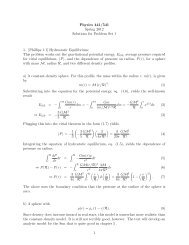MasteringPhysics: Print View with Answers
MasteringPhysics: Print View with Answers
MasteringPhysics: Print View with Answers
You also want an ePaper? Increase the reach of your titles
YUMPU automatically turns print PDFs into web optimized ePapers that Google loves.
field, has a larger magnitude.<br />
ANSWER:<br />
greater than the magnitude of the electric field at point B.<br />
less than the magnitude of the electric field at point B.<br />
equal to the magnitude of the electric field at point B.<br />
unknown because the value of the electric potential at point C is unknown.<br />
Problem 23.32<br />
Description: A total electric charge of q is distributed uniformly over the surface of a metal sphere <strong>with</strong> a radius of r. The potential is zero at a point at<br />
infinity. (a) Find the value of the potential at r_1 from the center of the sphere. (b) Find the value...<br />
A total electric charge of 4.10 nC is distributed uniformly over the surface of a metal sphere <strong>with</strong> a radius of 22.0 cm . The potential is zero at a point at<br />
infinity.<br />
Part A<br />
Find the value of the potential at 53.0 cm from the center of the sphere.<br />
ANSWER:<br />
= 69.5 V<br />
Part B<br />
Find the value of the potential at 22.0 cm from the center of the sphere.<br />
ANSWER:<br />
= 168 V<br />
Part C<br />
Find the value of the potential at 11.0 cm from the center of the sphere.<br />
ANSWER:<br />
= 168 V<br />
Exercise 23.34<br />
Description: An infinitely long line of charge has linear charge density lambda. A proton (mass m_p, charge e) is r from the line and moving directly<br />
toward the line at v. (a) Calculate the proton’s initial kinetic energy. (b) How close does the proton get to...<br />
An infinitely long line of charge has linear charge density 3.00×10 −12 C/m . A proton (mass 1.67×10 −27 kg , charge e) is 13.5 cm from the line and moving<br />
directly toward the line at 2500 m/s .<br />
Part A<br />
Calculate the proton’s initial kinetic energy.<br />
Express your answer numerically in joules to four significant figures.<br />
ANSWER:


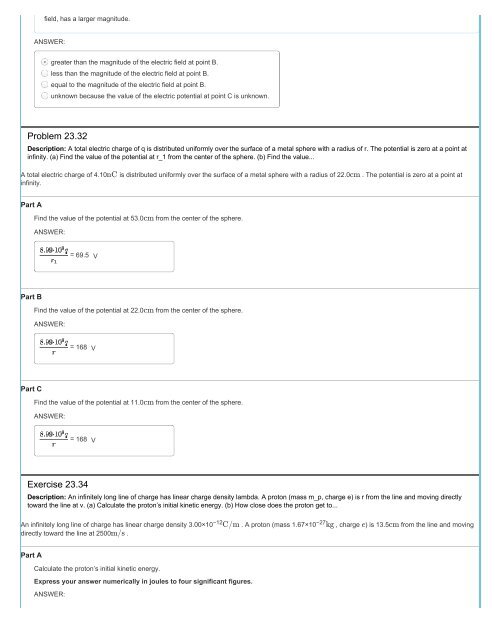


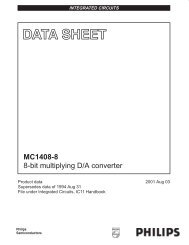

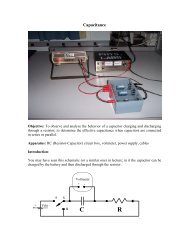


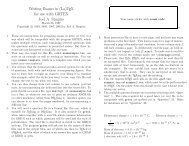
![More Effective C++ [Meyers96]](https://img.yumpu.com/25323611/1/184x260/more-effective-c-meyers96.jpg?quality=85)



